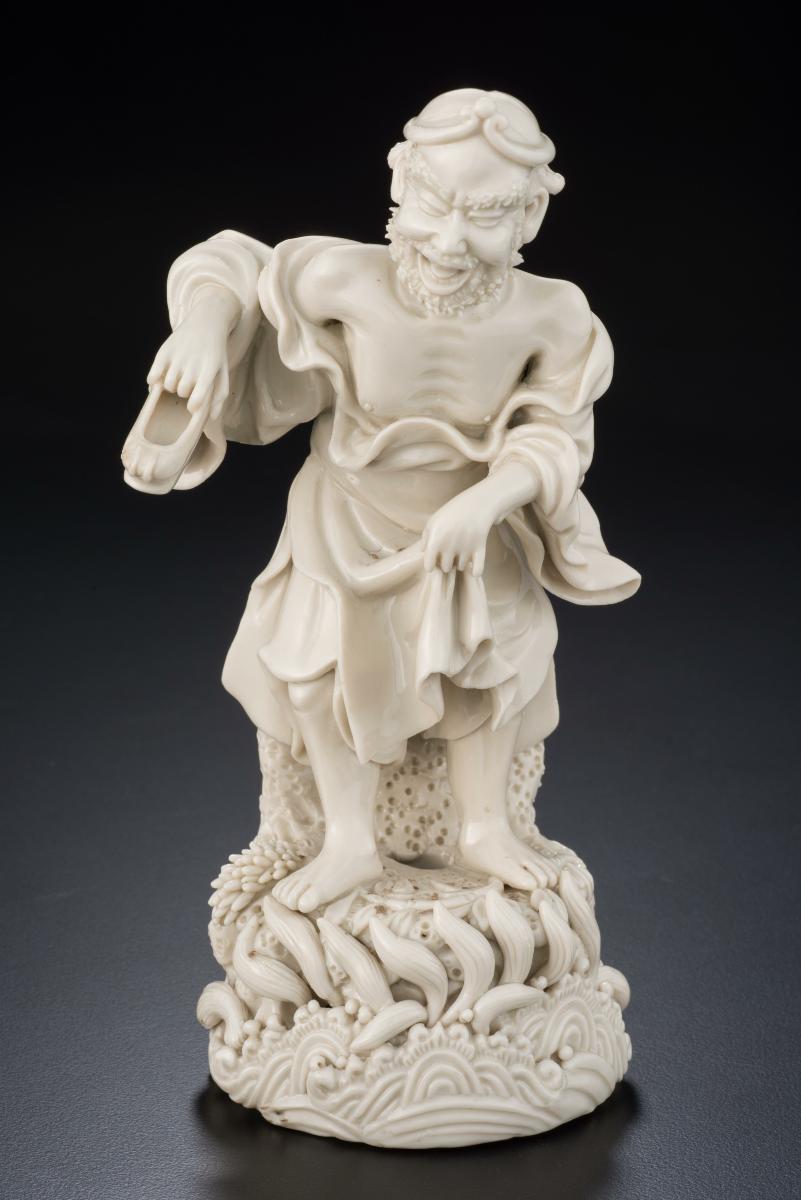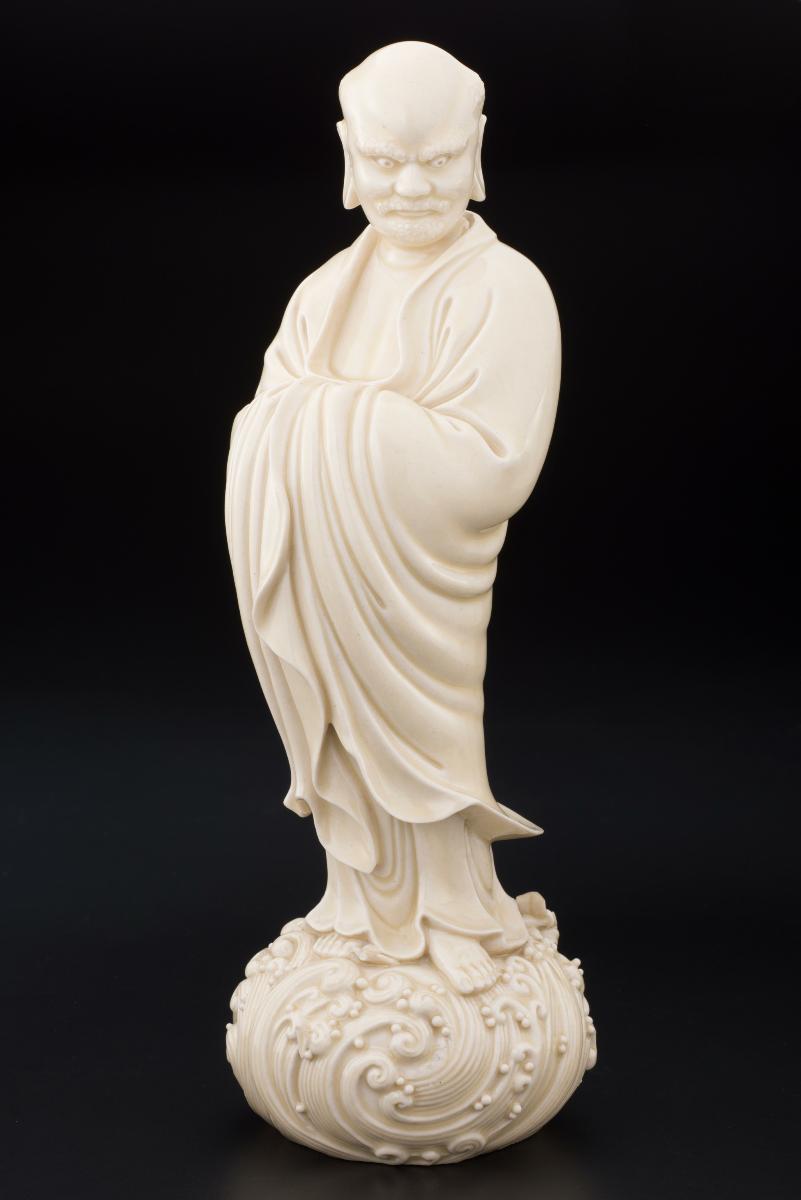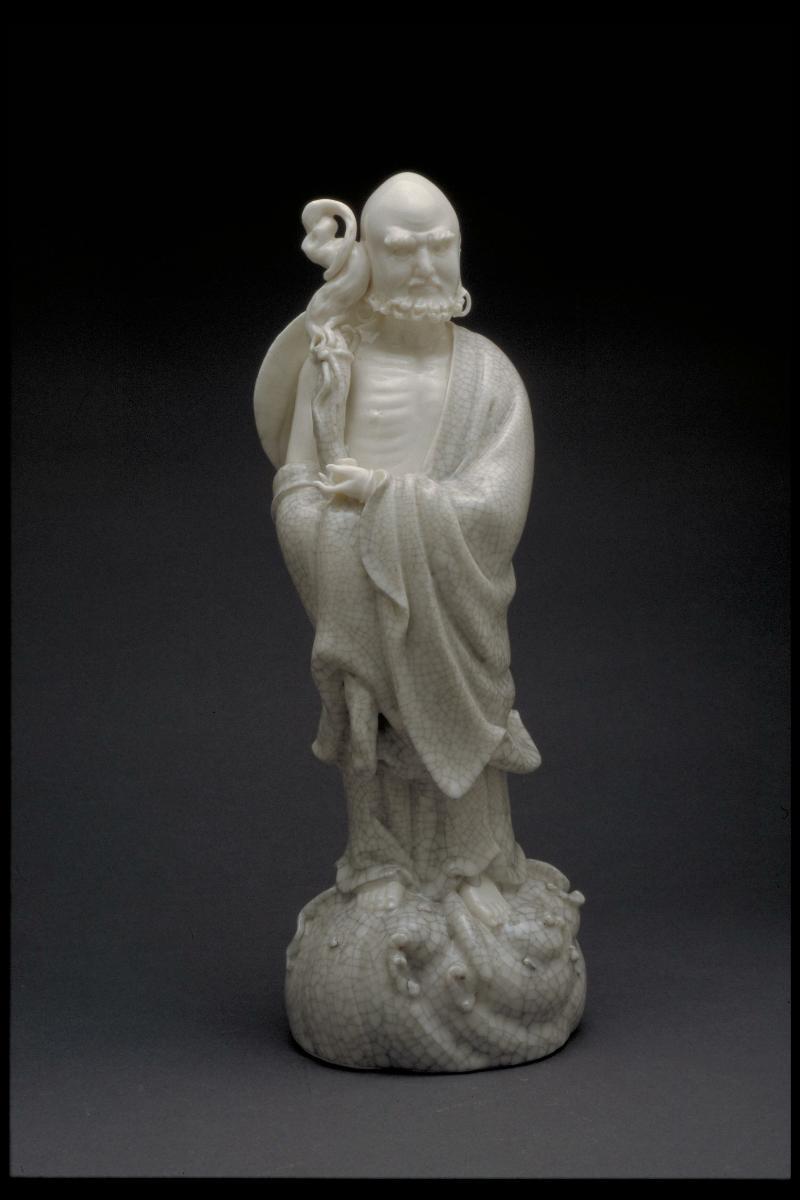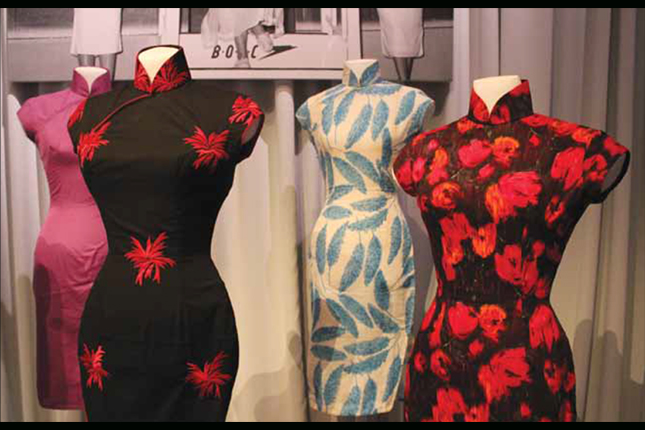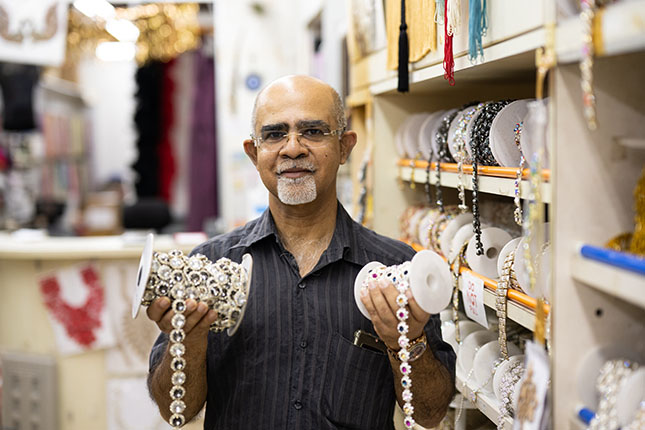This is one of the most expressive and intricate pieces in the collection. It is another variation on the story of Da Mo crossing the Yangzi and his journey to the West with only one shoe. It demonstrates the Dehua potters’ propensity for lively naturalistic interpretations, which seem to complement the esoteric nature of the subject matter. This figure was probably a complex combination of hand-modelled and press-moulded parts, while the base comprises incised rockwork to which separately moulded elements - waves, kelp, and tiny 'bubbles' of foam were applied. The laughing Da Mo expresses the humour that was so important to Chan or Zen buddhism. The exaggerated or outlandish depictions of Da Mo and other Buddhist characters from India were thought to add to such expressions.Dehua, located on the southeast coast of Fujian province, is well known for its production of white porcelain, known to Europeans as 'blanc de Chine'. The earliest Dehua porcelain was produced as early as the 14th century but the production and quality of these porcelain peaked around the 17th and 18th centuries.




